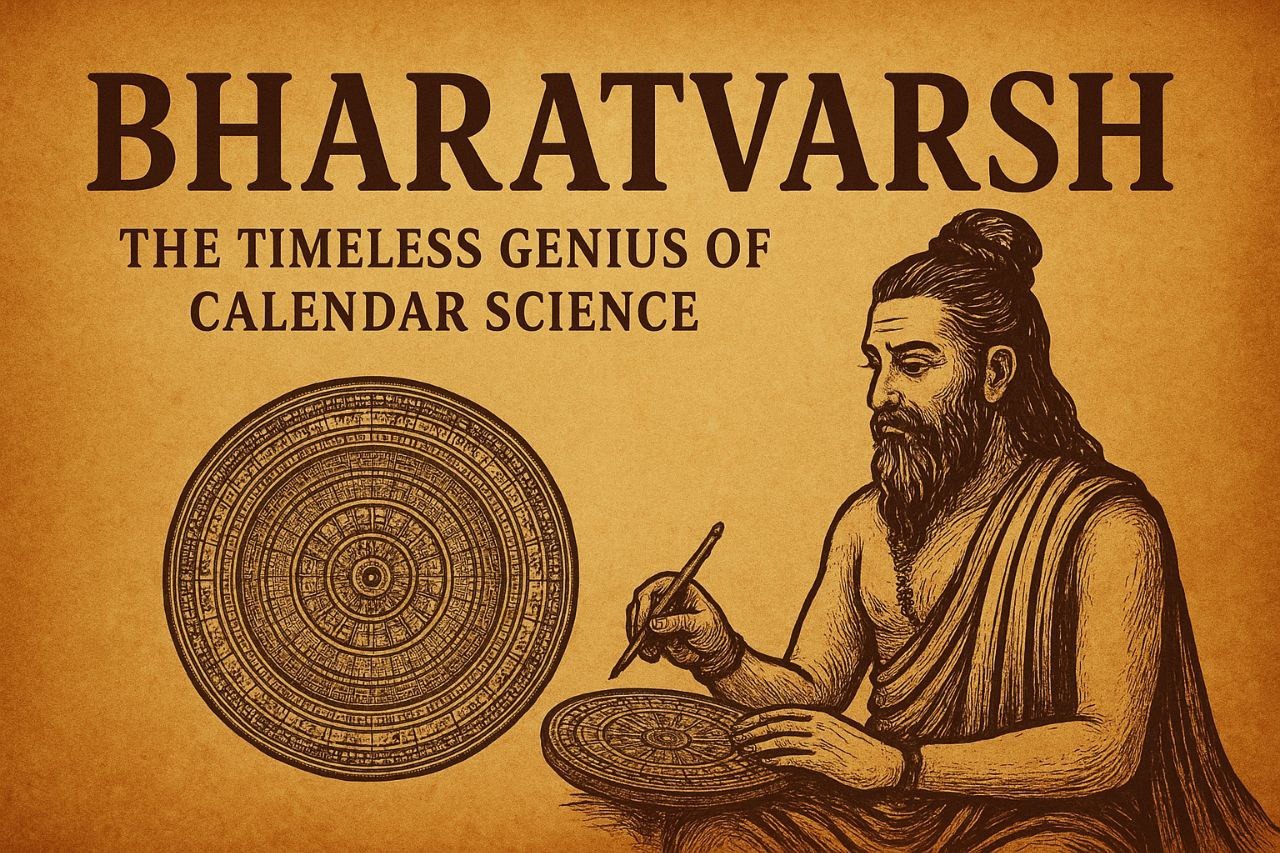There are no items in your cart
Add More
Add More
| Item Details | Price | ||
|---|---|---|---|

In a world that constantly praises Western scientific achievements, it's vital to acknowledge the timeless contributions of Bharatvarsh (ancient India) to the understanding of time, astronomy, and cosmic rhythms. One of the most profound proofs of this is India's advanced calendar systems, especially the Vikram Samvat, which continue to outshine their Western counterparts in precision, philosophy, and alignment with natural cycles.
Ancient Indian sages and astronomers didn't just observe time, they experienced it as a cosmic reality. The concept of time in India was never linear but cyclical, tied to celestial movements and divine rhythms. This is clearly seen in systems like:
Each system reflects profound astronomical knowledge that modern science is only beginning to appreciate.
"Time is not just measured in moments, but in the movements of the cosmos. India understood this truth millennia ago." ~ Adarsh Singh
Established in 57 BCE by the legendary King Vikramaditya, the Vikram Samvat stands tall as one of the world’s oldest calendar systems still in use. It was created not just for timekeeping but to celebrate victory, culture, and cosmic alignment.
"The West counts for years. Bharat counts cosmic pulses." ~ Adarsh Singh
"Every moment in Indian time has a soul, a purpose, and a divine signature." ~ Adarsh Singh
"Science gives us the age of the universe. Sanatan Dharma gives us its rhythm." ~ Adarsh Singh
Western astrology uses the tropical zodiac, which drifts over time due to axial precession. Indian astrology (Jyotish) uses the sidereal zodiac, anchored to actual star positions, making it astronomically accurate.
"When your calendar matches the stars, your life aligns with the universe." ~ Adarsh Singh
The world may run on clocks, but Bharatvarsh runs on a cosmic rhythm. Our ancestors gave us more than just calendars, they gave us the tools to align with the divine timing of the universe.
"Bharatvarsh didn’t just invent a calendar, it discovered the heartbeat of time itself." ~ Adarsh Singh
Tue Apr 29, 2025
Adarsh Singh
A Lifelong Seeker/believer of......
Sanatan Dharma | Spirituality | Numerology | Energy Healing, Ayurveda, Meditation |Mind & Motivation | Money & Markets | Perennial Optimist | Politics & Geopolitics
Founder of iSOUL ~ Ideal School of Ultimate Life
Adarsh Singh empowers individuals to live purposefully by integrating timeless wisdom with practical tools. With 18+ years in finance and a deep connection to spirituality, his teachings blend Mind, Matter, Money and Meaning to help people create a truly fulfilling life.